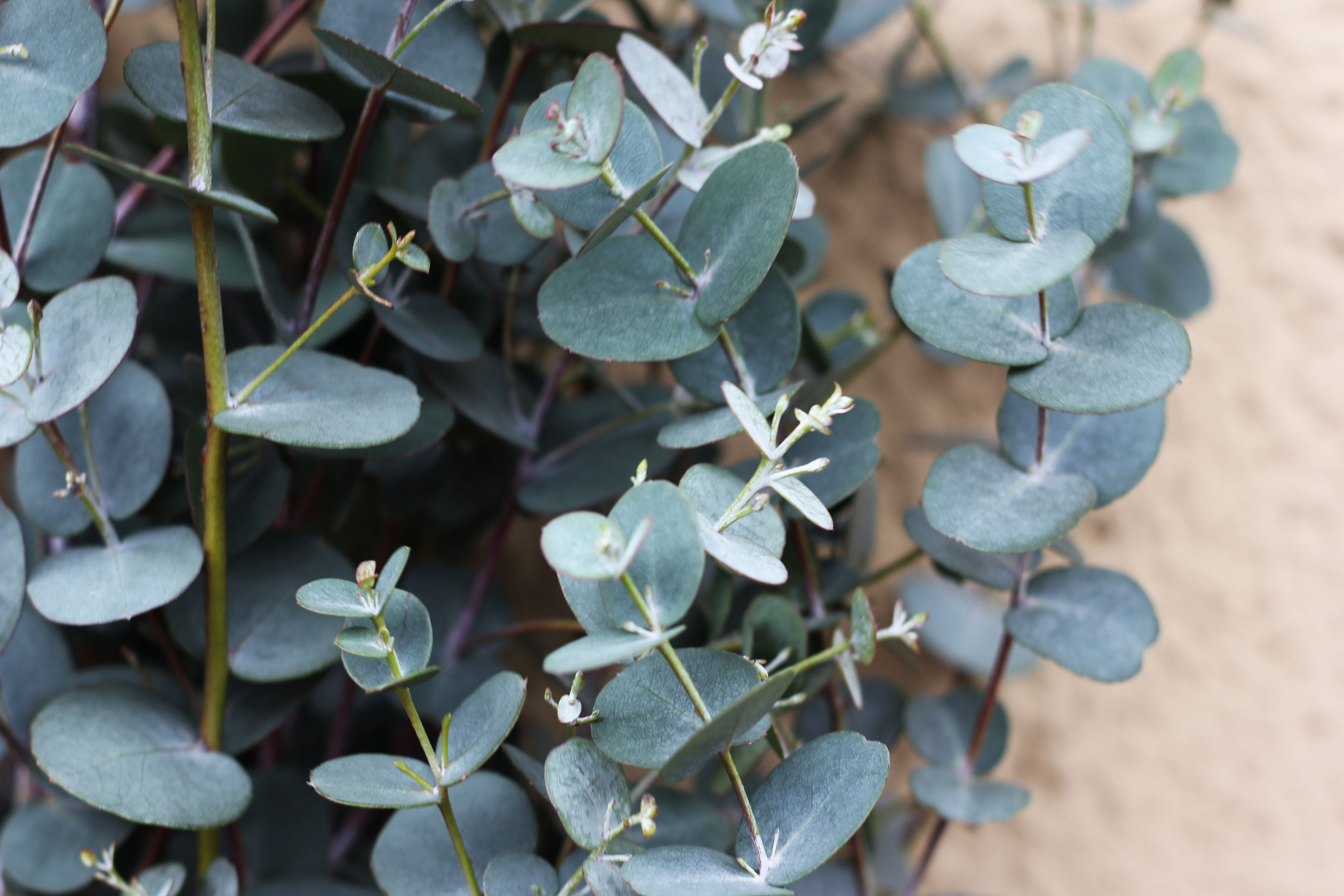Cider Gum
(Eucalyptus gunnii)

Description
Eucalyptus gunnii, commonly known as Cider Gum or Tasmanian Cider Gum, is a species of evergreen tree that is native to Tasmania and southeastern Australia. It belongs to the family Myrtaceae, which is one of the largest families of flowering plants, comprising over 5,000 species. The species name 'gunnii' is named after Ronald Campbell Gunn, a Tasmanian botanist who collected the type specimen. In this article, we will discuss the various aspects of Eucalyptus gunnii, including its physical characteristics, habitat, cultivation, and uses. Physical Characteristics Eucalyptus gunnii is a tall tree that can grow up to 35 meters in height, with a trunk diameter of up to 2 meters. The bark of the tree is smooth and greyish-brown, peeling away in strips to reveal a greenish layer underneath. The leaves of the tree are a distinctive silvery-blue color and are round or oval in shape. They measure approximately 5 to 12 centimeters in length and are arranged alternately on the stem. The tree produces white, cream or pale yellow flowers that are around 1 cm in diameter and bloom between June and August. Habitat and Distribution Eucalyptus gunnii is native to southeastern Australia, specifically Tasmania, Victoria, and New South Wales. The tree is found in a variety of habitats, including wetlands, forests, and woodlands. It is adapted to a range of soil types, but prefers well-drained soils. The tree can tolerate cold temperatures and can survive temperatures as low as -14°C. The species is also drought-resistant and can grow in areas with low rainfall. Cultivation Eucalyptus gunnii is a popular ornamental tree that is widely cultivated in gardens and parks. It is grown for its attractive silvery-blue leaves and is often planted as a windbreak or a screen. The tree is also used for erosion control due to its deep root system. The tree can be propagated from seeds or cuttings. It prefers full sun and well-drained soils. The tree can be pruned to maintain its shape, but pruning should be done sparingly to avoid damaging the tree. Uses Eucalyptus gunnii has a range of uses, both medicinal and industrial. The tree is a source of essential oil, which is extracted from the leaves and is used in aromatherapy and in the production of fragrances, soaps, and cosmetics. The essential oil is also used in traditional medicine to treat respiratory problems, such as coughs and colds. The tree's timber is used in the construction industry for flooring, furniture, and paper production. In addition to its practical uses, Eucalyptus gunnii has cultural significance for the indigenous peoples of Australia. The tree has been used for centuries in indigenous medicine and is considered a symbol of strength and resilience. The tree also has spiritual significance and is used in various indigenous ceremonies and rituals. Conclusion Eucalyptus gunnii is a fascinating tree with a range of practical and cultural uses. Its attractive silvery-blue leaves and adaptability to a range of soil types make it a popular choice for gardeners and landscapers. The tree's essential oil has a range of industrial and medicinal applications, while its timber is valued for its durability and strength. The tree's cultural significance is a testament to the importance of nature in indigenous cultures and highlights the need for the preservation of natural ecosystems.
Taxonomic tree:







